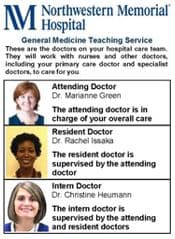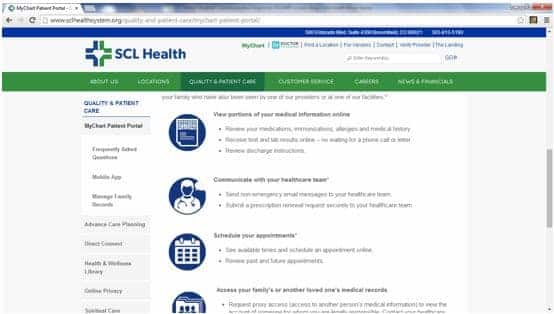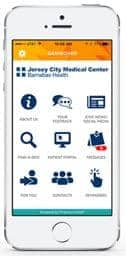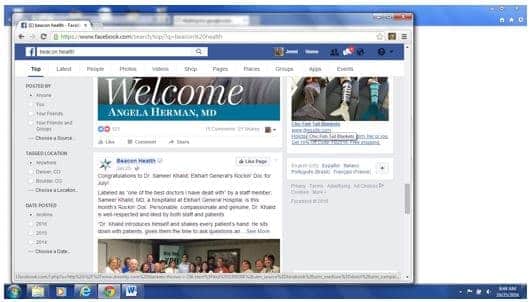Better Hospital Communication Improves HCAHPS Scores
January 21, 2017
Since the establishment of the Affordable Care Act in 2012, one question has been plaguing hospitals all over the country….“How can we improve our HCAHPS (Hospital Consumer Assessment of Healthcare Providers and Systems) scores?”
With the Centers for Medicare & Medicaid Services’ (CMS) Hospital Value-Based Purchasing Program, which ties patient satisfaction scores to hospital reimbursements, hospitals are finding the need to really focus on the patient experience and improve their HCAHPS scores. The question is, how?
Studies done by experts such as Matthew Bates, managing director for Chicago-based Huron Consulting Group, have found that the key to getting higher HCAHPS scores is focusing on and improving communication within hospitals.
According to Bates, whose national consulting firm works with approximately 1,000 hospitals on the patient experience focus, hospitals have been most challenged on the communication components of the HCAHPS.
Another study, out of Rush University Medical Center, found that by improving their methods of communication within the hospital, they were able to raise their overall HCAHPS ratings by nearly 10 percent, with the doctor communication scores demonstrating an improvement of 59 national percentile points.
So, what can hospitals do to improve communication?
For starters, many hospitals and health systems have begun establishing the role of Chief Experience Officer, or CXO, to have someone in charge of pinpointing the gaps in communication and finding ways to implement better communications methods.
In addition to enhancing verbal communication and patient interaction, CXOs are finding it equally important to improve hospitals’ written communications.
From signs posted in hospital rooms, to health information pamphlets given upon discharge, written communication is vital to the patient experience. Therefore, improving the way that a hospital utilizes written communication is key.
It has been found that communications are most effective when they:
- Are easy to read
- Simple to understand
- Direct and to the point
- Use pictures or graphics to help illustrate their purpose
- Use fonts that are easy to read
Studies have also shown that most patient health information is written in a grade level too high for most people to understand.
According to the Online Journal of Issues in Nursing, it is very important that hospitals design their written materials so that the average person cannot only read it, but can also fully comprehend what they are reading.
- Vocabulary should be simple and clear.
- Common words should be used in lieu of medical jargon:
- “heart attack”, instead of “myocardial infarction”
- “high blood pressure” instead of “hypertension”
- “yellow” instead of “jaundice”
- Materials should include appropriate illustrations.
- Sentences should be short and to the point.
Cultural sensitivity is also very important in written communications.
Miscommunication between cultures, when it comes to medical information, can have devastating effects.
While a person may demonstrate proficiency in the spoken English language, this does not necessarily mean that they can properly comprehend the written information they are given.
Having educational materials available in a patient’s native language increases the likelihood of them being able to understand the information provided, and that they appropriately follow up with their care.
Other ways hospitals are using written communication

These cards include a photograph of the doctor, along with a description of their role and their contact information. These cards help patients to keep track of who is who within their medical team and what each of them is responsible for.

Surveys done in hospitals using the “face cards” or reference sheets have found that patients really responded to the use of these methods, and that 92 percent of them would like to receive this kind of communication at future hospitalizations.
How technology plays a part:
Hospitals are capitalizing on the ever-increasing development of technology to improve communication, too. “Hospitals are relying more and more on technology as means of communication. Kristin Baird, founder and CEO of the medical consulting firm, the Baird Group, described this trend in a recent interview.
“(Hospitals) are using engagement tools — software and apps and patient portals. Through these, patients have more direct access to their health information.”
Another way hospitals are taking advantage of the growing popularity of technology: they’re redesigning their websites to be more user-friendly and to provide more information for their patients.
- Websites are featuring patient friendly toolbars, where basic information such as hospital contact information, links to pay medical bills, and specific medical departments can be readily accessed.
- Videos, blogs, and preventative care information can all be accessed through online patient-care areas.
- The videos can include scripted presentations by popular physicians who provide valuable information for patients.
- Many hospital websites are beginning to spotlight online support groups and chat rooms, as well, where a patient can connect with others who are dealing with similar health conditions. The support groups also include addiction recovery. These can be privacy protected with the use of a log-in password. The patient therefore has 24/7 support in dealing with his/her health problem.
Increasing numbers of hospital websites provide personal portals, as well, where patients can:
- Access notes from their office visits
- View lists of medications and immunizations, as well as lab results
- Email a physician or nurse
- Request prescription refills
- Schedule appointments
- Complete medical forms
- Read educational material
- View bills and make payments
- Access medical history
- Receive real-time updates about medical care, while admitted to a hospital
Information on the go
A recent FICO survey of more than 2,000 Smartphone users found that 80 percent of respondents would like a way to communicate and interact with their doctors on their mobile devices.
In early 2015, Practice Unite, a HIPAA-compliant mobile application platform for healthcare organizations, announced a new smartphone app for patients.
Through the mobile apps, which have similar functionality to the web portals, patients can access all of their important medical information wherever they are.
Hospitals benefit from Mobile Apps
Along with patients, physicians and hospitals benefit from the use of mobile apps, as well. A mobile app can be used by a doctor to:
- Quickly retrieve a patient’s medical/surgical history
- View any medications that the patient has been prescribed
- Collaborate with a specialist in critical situations
- Follow up with patients after discharge
Social Media
Sites such as Facebook, Twitter, and Instagram are being used more and more by hospitals as a way to communicate with patients and differentiate themselves from the competition. Through these sites, hospitals can:
- Advertise and promote upcoming events
- Post health education videos
- Answer general questions from patients
- Share new and relevant studies
Social medial sites also can be a way for patients to share their opinions and experiences with others in the community. Kristin Baird, from the Baird Group, believes that it is important for hospitals not to discount the importance of tapping in to social media. As she puts it,
“Social media definitely plays into it [HCAHPS scores] because it is the voice of the consumer,” she said. “People pay attention to Yelp and Facebook for others’ opinions. It has an influence on how people make their choices.”
Ultimately, it is the voice of the consumers, and the way they feel about their experiences with a hospital, that dictate how well hospitals score.
Whether it is through signs posted in the hallways of a medical facility, handouts given to patients at the time of hospitalization, or websites used to facilitate follow-up care, excellent written communication is central to improving HCAHPS scores.




































HelloHiHello thereHi thereHowdyGood dayHey there! I justI simply would like towant towish to give you aoffer you a hugebig thumbs up for thefor your greatexcellent infoinformation you haveyou’ve gotyou have got hereright here on this post. I will beI’ll beI am coming back toreturning to your blogyour siteyour websiteyour web site for more soon.
I’m impressedamazed, I must sayI have to admit. RarelySeldom do I encountercome across a blog that’s bothequallyboth equally educative and entertainingengaginginterestingamusing, and let me tell youwithout a doubt, you haveyou’ve hit the nail on the head. The issue isThe problem is something thatsomething whichsomethingan issue that not enoughtoo few people arefolks aremen and women are speaking intelligently about. I amI’mNow i’m very happy that II stumbled acrossfoundcame across this in myduring my search forhunt for something relating to thisconcerning thisregarding this.
Really appreciate thanks for sharing the post !!!!!